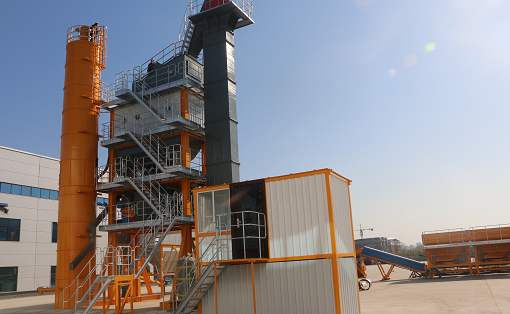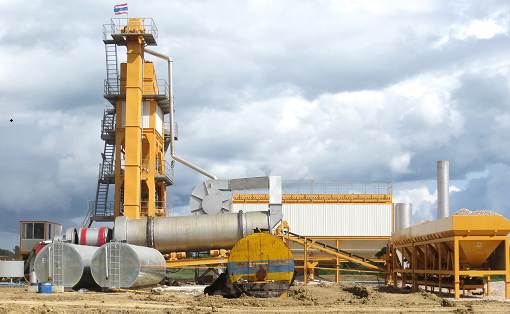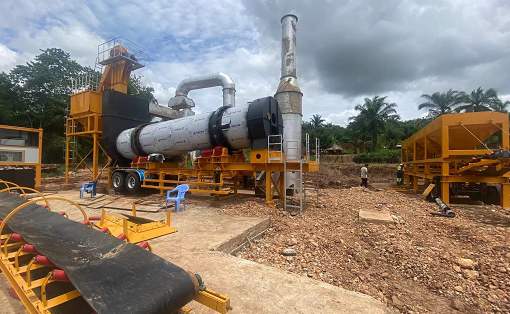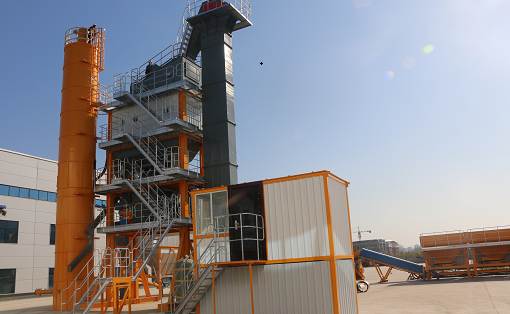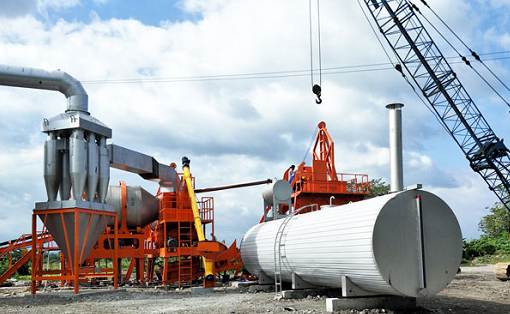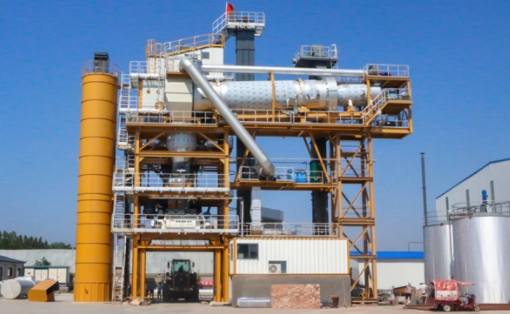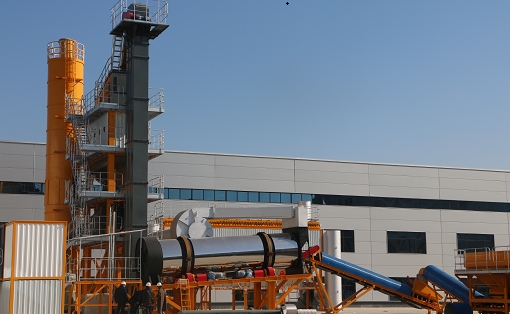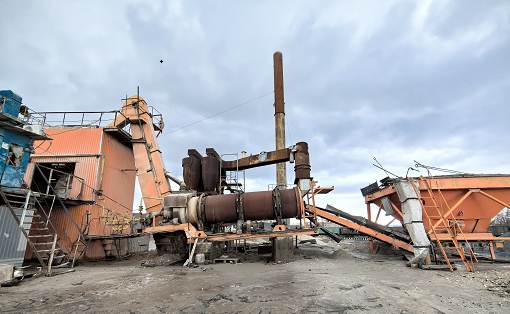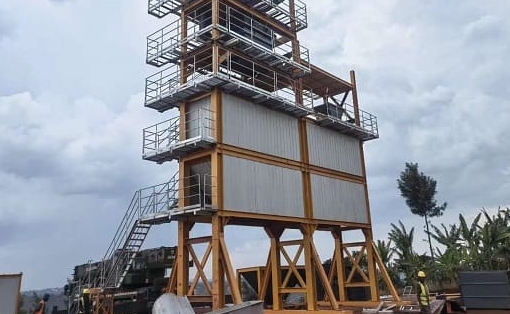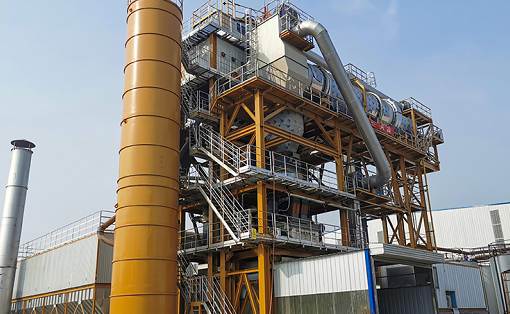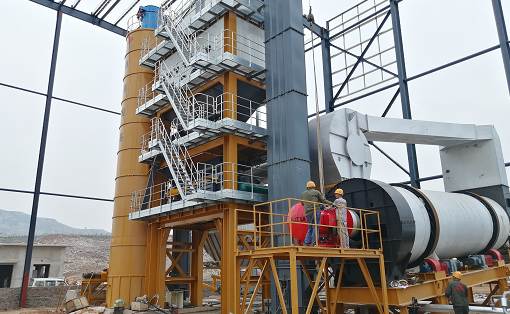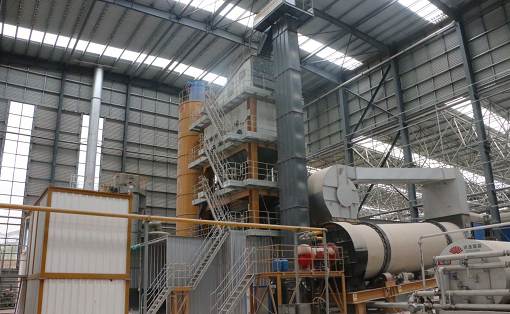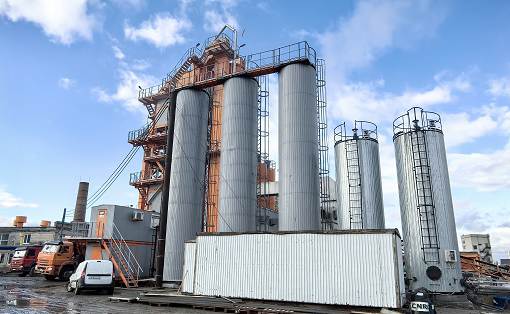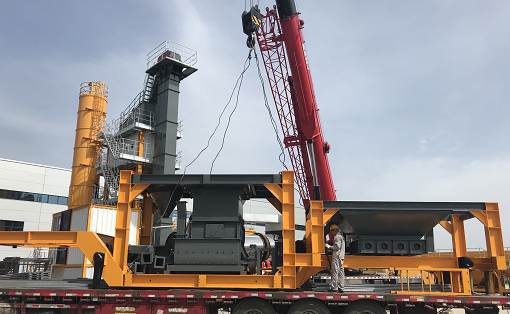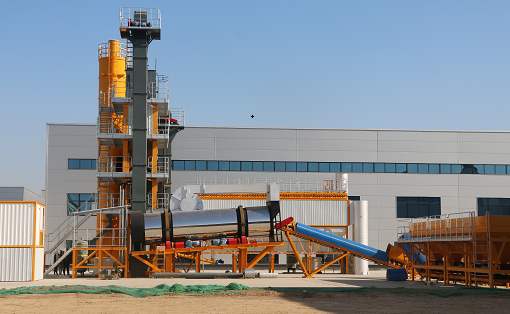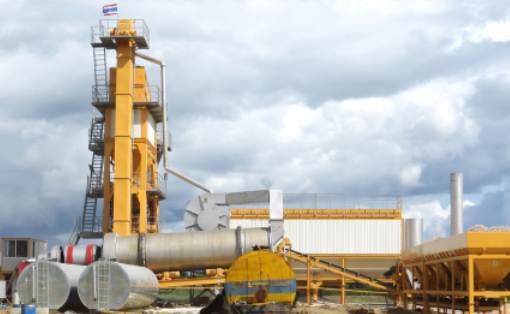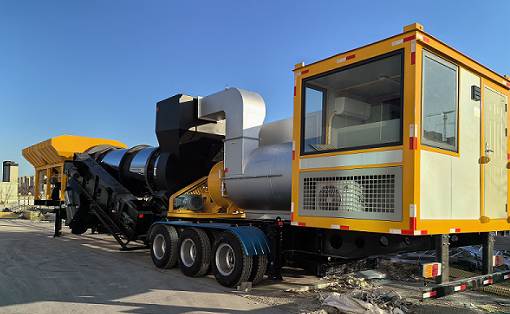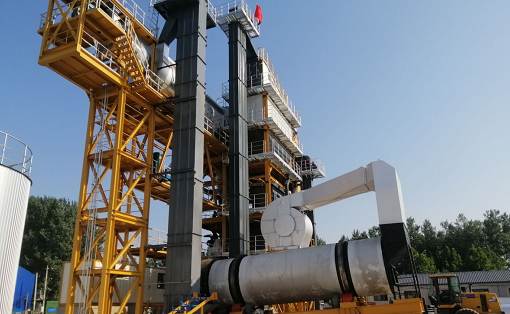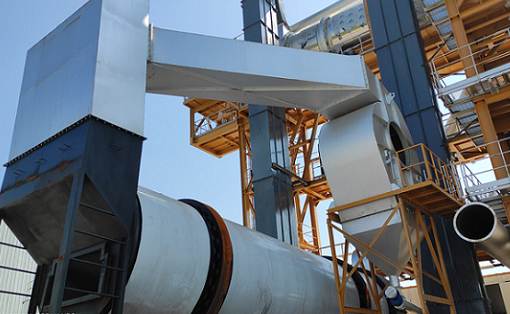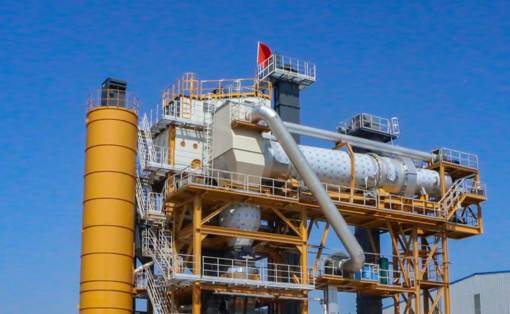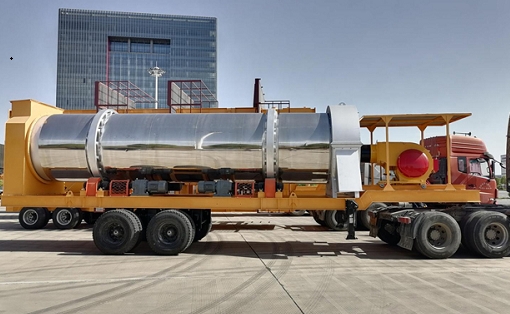Key points for supervision and control of ordinary highway asphalt mixing plants
The quality of asphalt mixture directly determines the quality of asphalt pavement engineering. This article discusses the key points of supervision of ordinary highway asphalt plants in order to better monitor the quality of asphalt mixture.
The quality of asphalt mixture directly determines the quality of asphalt pavement engineering. This article discusses the key points of supervision of ordinary highway asphalt plants in order to better monitor the quality of asphalt mixture.
[1]. Basic requirements for asphalt mixer plants
Asphalt mixing plants must use intermittent mixers, and the number of cold silos must meet the mix ratio requirements. Before mixing production, the asphalt mixer weighing and measuring system should be calibrated and approved by relevant departments. The mixing site is hardened with cement concrete to ensure smooth drainage. A canopy is set up in the aggregate bin, and different material sources are stored in different grades. The signs are clear and partition walls are used to separate the materials to ensure that materials are not mixed.
The asphalt mixing plant has special qualifications for testing and testing, and its personnel, equipment, and regulations meet the requirements.
[2].Safe production
Safety production is the top priority in all production work. In addition to hanging safety production flags, safety production banners, job responsibility signs, safety operating procedures signs, etc., asphalt mixing plants should also conduct safety production inspections for every employee. Disclosure and safety education, and conscientiously implement safety production responsibilities.
In the early stage of construction, the asphalt mixing plant should carry out maintenance and adjustment of the mixing equipment, conduct inspections for key safety hazards such as boilers, and install lightning rods on the top of the storage tanks. Safety protection devices should be installed on work platforms, feed bins, asphalt tanks and other parts involving personal safety, and exposed parts of the transmission system should have protective devices and safety maintenance protection devices.
[3]. Quality control of raw materials
The quality of raw materials is the basis of the quality of asphalt mixture. Various raw materials should be strictly inspected before production. The main raw materials (asphalt) should have factory material sheets. The inspection frequency is as follows:
The first mix design is carried out before construction. The main testing items are: ① Penetration, ductility (elastic recovery), and softening point of modified asphalt; ② Grading test, sand equivalent, and apparent density of fine aggregate;
③ Gradation test of coarse aggregate, needle-like particle content, mud content, crushing value, apparent density, asphalt adhesion; ④ Appearance of mineral powder, gradation test, heating stability, hydrophilic coefficient, Liquid plastic limit, density.
The main testing items during construction include ① the penetration, ductility (elastic recovery), and softening point of modified asphalt. The inspection frequency is 1 time/car, and the random inspection frequency is 20%; ② The gradation test and sand equivalent of fine aggregate, the inspection frequency is 1 time/400m3, and the random inspection frequency is 20%; ③ The gradation test and needle inspection of coarse aggregate Flaky particle content, mud content, crushing value, apparent density, asphalt adhesion, the detection frequency is 1 time/400m3, and the sampling frequency is 20%; ④The appearance of the mineral powder, gradation test, heating stability, For hydrophilicity coefficient, liquid plastic limit, and density, the detection frequency is 1 time/400m3, and the sampling frequency is 20%.
[4]. Verification of asphalt mixture proportions
Verify the mix ratio of the asphalt mixture in a timely manner based on the asphalt mixture mix ratio reported by the asphalt mixing plant, and conduct a Marshall test according to the laboratory target mix ratio determined by the asphalt mixing plant to determine whether the mix ratio meets the requirements of the construction technical specifications. If necessary, a rutting test should be conducted to test the high-temperature performance of the asphalt mixture.
As an asphalt mixing plant supervisor, you should be completely familiar with the target mix ratio and production mix ratio, including asphalt content, mineral powder content and various mineral material ratios, as well as the primary cold material mixing of the asphalt mixer and the secondary screening of the hot material bin. Screen holes at all levels are used to prepare for adjusting the production mix ratio of asphalt mixture.
[5]. Supervision matters during production
5.1 Asphalt content, mineral gradation and Marshall test
Asphalt content, mineral gradation and Marshall test are important indicators of the quality of asphalt mixtures. Therefore, it is crucial to check the asphalt content, mineral gradation and Marshall test of asphalt mixture at the side plant frequently. The frequency of testing is 1-2 times per shift. Asphalt mixing plant test personnel are urged to affix the electronic strips printed by the combustion furnace and Marshall tester on the test report as a valid basis for the source of test data. The sampling frequency of supervision is 20% of the asphalt mixing plants, which are sent to the supervision center laboratory or a qualified testing and testing center for inspection, and provide data standards for road compaction testing.
5.2 Heating temperature and mixing time of asphalt and mineral materials
There is no data directly showing the temperature of the finished asphalt mixture on the asphalt mixing machine, so you should pay close attention to the asphalt temperature and the heating temperature of the mineral material, including the drum temperature and the thermal extraction temperature of the mineral material, so as to infer the temperature of the finished asphalt mixture. The mixing time of the asphalt mixture is determined by trial mixing according to the specific situation. It is based on the asphalt evenly coating the aggregate. The production cycle of each plate of the intermittent mixer should not be less than 45s (the dry mixing time should not be less than 5-10s). , the mixing time of modified asphalt and SMA mixture should be appropriately extended.
5.3 Ore powder recycling rate
The recycling rate of mineral powder is required to be controlled within 25%. Changes in the utilization ratio of recycled powder include changes in the use of recycled powder caused by different dust removal effects. Even if recycled powder is not used, if the dust removal effect is weakened, In essence, it can still be regarded as part of the recovered dust being used, so asphalt mixing plants should be urged to carry out regular dust removal and bag cleaning. In addition to avoiding an increase in the recycling rate of mineral powder, it can also avoid asphalt mixing caused by excessive temperature at the secondary auger. Shut down failure, while meeting the requirements of environmental protection.
5.4 Loading and transportation
Transport trucks should be loaded with materials in three stages: front, rear and middle. The height should be consistent to prevent segregation. All trucks should be covered with insulation to prevent spillage when leaving the factory.
5.5 Factory temperature
Use a plug-in digital thermometer with a metal detector needle to insert into the finished asphalt mixture of the skip truck to a depth of 15cm to more accurately determine the factory temperature of the asphalt mixture. When the weather changes, transportation distance and isochronous adjustment, the temperature can be appropriately adjusted within the specified range to ensure that the asphalt mixture can reach the paving and rolling temperature when unloading and paving. Each shift is tested 10 times, and the temperatures are as follows:
Factory temperature of asphalt mixture (°C)
If the temperature of the asphalt mixture is too low, flowers will appear, and if the temperature is too high, the asphalt will burn. The primary mix of cold materials and the moisture content of the raw materials should be controlled to ensure the normal working condition of the burner, thereby ensuring the factory temperature of the asphalt mixture.
[6] things to note
6.1 Determination of combustion correction coefficient of combustion furnace
The accuracy of the combustion furnace directly affects the judgment of asphalt content. Before starting work, you should first ask a qualified measurement unit to perform regular calibration, and determine the combustion correction coefficient for mineral materials with different mix ratios from different origins.
The determination of the combustion correction coefficient plays a vital role in determining the asphalt content in the asphalt mixture. However, there is currently no clear operating procedure for determining the combustion correction coefficient. The usual methods are as follows: (1) Configure the selected asphalt through calculation Three groups of asphalt mixtures with a content and selected asphalt content ±0.3%; ⑵ Put them into a combustion furnace that has reached the set temperature and burn them to constant weight; ⑶ Calculate the loss rate of the asphalt mixture, using the loss rate and the preset The average value of the difference in asphalt dosage is used as the combustion coefficient.
Because there are many factors that affect the combustion correction coefficient, the combustion coefficient should be corrected frequently during construction. The combustion coefficient must be corrected when raw materials change, the mineral composition changes, and the proportion of recycled powder recovery changes.
6.2 Adjustment of production mix ratio
The primary allocation of cold materials is to calculate the speed of the batching motor of each cold material bin and the height of the material door based on the proportion of various materials in the target mix ratio to determine the transportation volume of various materials. If the primary mix of cold materials is inaccurate, there will be material waiting and overflow. The test personnel should adjust the primary mix of different raw materials based on the screening test data. The cylinder should be designed with a mix ratio that is consistent with the target mix ratio to ensure that the mix is mixed properly. The stability and continuity of joint production. After the primary mix of cold material is stable, testers must screen the hot material bins to determine the proportion of materials with different particle sizes in each hot material bin. During the production and mixing process, asphalt mixing plant operators are not allowed to adjust the number of revolutions of the batching motor in the cold silo, change the production mix ratio data, and are not allowed to increase the productivity of the mixing plant by skipping materials, replenishing materials, etc.

